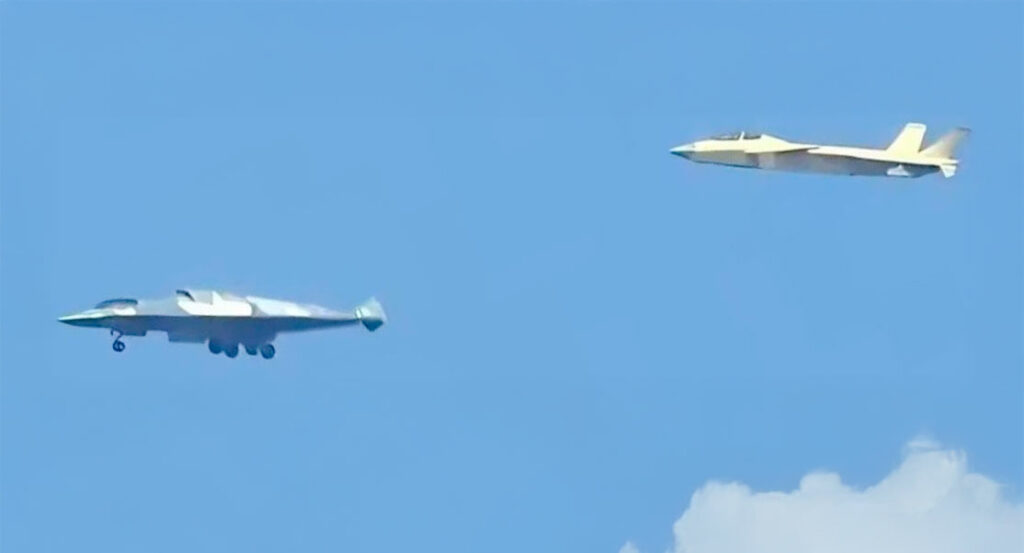
F-14 superiority in the 1981 Gulf of Syrte incident
9 December 2024
Israel accelerates research into artificial intelligence and military autonomy
6 January 2025The Chinese J-36, a new sixth-generation stealth aircraft, promises increased autonomy, advanced stealth and unprecedented multi-domain capabilities.
China recently unveiled the J-36, a sixth-generation stealth fighter. This tailless model uses advanced technology to reduce radar signature and optimize range. Features include WS-10C engines, multi-function sensors, and a cutaway configuration that maximizes stealth and payload capacity. Compared to the J-20, this new aircraft seems designed for long-range missions, increasing China’s strategic capability against rivals like the USA.

The appearance of the J-36: context and implications
The unexpected appearance of the J-36 marks a significant milestone in the military technology race. The aircraft was spotted alongside a Chengdu J-20S, serving as a point of comparison. The first images show an innovative design with no tailplane, optimizing radar visibility.
Strategic context analysis
The introduction of the J-36 comes at a time when China is pursuing programs such as the American Next Generation Air Dominance (NGAD). The lack of official confirmation from the Chinese Ministry of Defense points to an implicit deterrence approach, leaving observers to speculate about its exact capabilities.
Technical innovations on the J-36
The tailless design is based on a modified delta wing, reducing the radar signature on several spectrums. This model also includes :
- Hybrid air intake system: Two lower and one upper intake, favoring air distribution to three WS-10C engines.
- Advanced sensors: Electro-optical windows and side-mounted radars for multi-angle coverage.
- Enhanced stealth technology: Compared to the J-20, this technology further reduces infrared and radar signatures.
Dimensions and payload
With an estimated length of 21 meters, the J-36 rivals the J-20 in size. Its internal configuration allows a substantial payload for weapons, sensors and an increased fuel tank.


Strategic implications for China and its rivals
The introduction of the J-36 alters the balance of power in the Asia-Pacific region:
- Operational autonomy: Ability to cover long distances without refueling, a weakness of the current Chinese fleet.
- Multi-domain capabilities: Surveillance, attack and command in hostile zones.
- Increased threat to US allies: Ability to operate in areas where air defenses are currently inadequate.
Comparisons with US initiatives
The similarities between the J-36 and the American NGAD point to technological convergence. Both countries are aiming for drone-aircraft integration to maximize efficiency in the field. However, the J-36 seems more oriented towards endurance, an asset for China in remote areas.
The J-36 is not just a new aircraft, but a symbol of China’s rapid evolution in military aviation. Its strategic and technological implications make it a key player in global competition.
We offer a fighter jet rides in France – come fly with us! And you can even take the controls!




